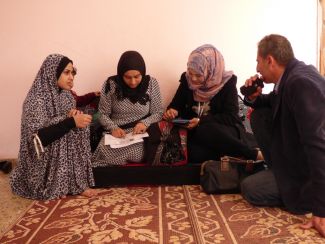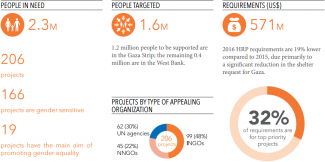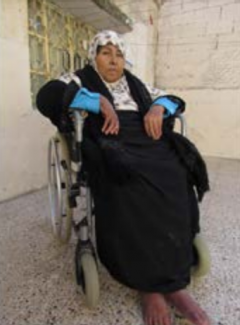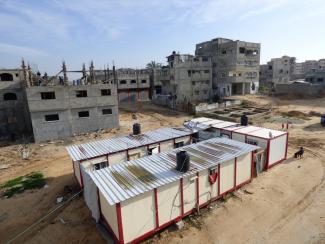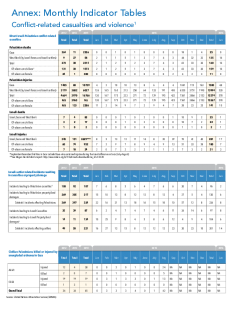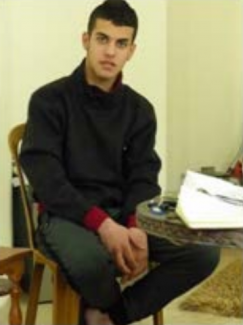At the end of 2015, more than 16,000 families (over 90,000 individuals) remained displaced as a result of the 2014 Gaza-Israel hostilities, which destroyed 11,000 homes and severely damaged or rendered uninhabitable an additional 6,800 homes. The living conditions of these families raise a range of protection concerns, including overcrowding, limited access to basic services, lack of privacy, tensions with host communities, risks due to unexploded ordnance and exposure to adverse weather.
The Monthly Humanitarian Bulletin | January 2016
Reconstruction or repair of the homes of 74 per cent of families displaced during the 2014 hostilities in the Gaza Strip is yet to start, exacerbating frustration and vulnerability. New movement obstacles across West Bank roads impede access to services and undermine economic activity, directly impacting on at least 850,000 Palestinians, the majority in Hebron governorate. Increase in the number of Palestinian children in Israeli custody, alongside concerns over their conditions of detention and allegations of violence against them.
In this document
1.6 million vulnerable Palestinians targeted for assistance again in 2016
A rapid survey carried out by OCHA during the last week of 2015 found that since the escalation in violence in October 2015, Israeli security forces have deployed 91 new obstacles (checkpoints, roadblocks, earth mounds, etc.) on West Bank roads to restrict Palestinian vehicular movement. This figure includes only those obstacles involving some kind of fixed infrastructure on the ground, thus excluding ad-hoc “flying” checkpoints (see table and map below). These obstacles are in addition to 452 pre-existing obstacles, representing a 20 per cent increase in their overall number.
The impact of the 2014 Gaza-Israel hostilities continues into 2016; more than 16,000 families (approximately 90,000 individuals) in Gaza remain displaced due to their homes being destroyed or severely damaged. Despite progress in repairing some 160,000 homes that suffered minor to major damage, reconstruction has been at a slow pace. By the end of January 2016, only 15 per cent of displaced families had been able to return to repaired or reconstructed homes. Work is ongoing to an additional 2,000 homes, but the reconstruction or repair of the homes of 74 per cent of displaced families is yet to start.
Figures on conflict-related casualties and violence, child Protection, access, search and arrest operations, demolition of structures, truckloads of goods entering Gaza from Israel and the Humanitarian Response Plan 2016
Amid heightened violence in late 2015, the number of Palestinian children detained by the Israeli authorities spiked to the highest figure since March 2009: at the end of December, 428 Palestinian children were in the Israeli prison system. Some 80 per cent of these children were in pre-trial detention, the majority of them facing charges of throwing stones.
